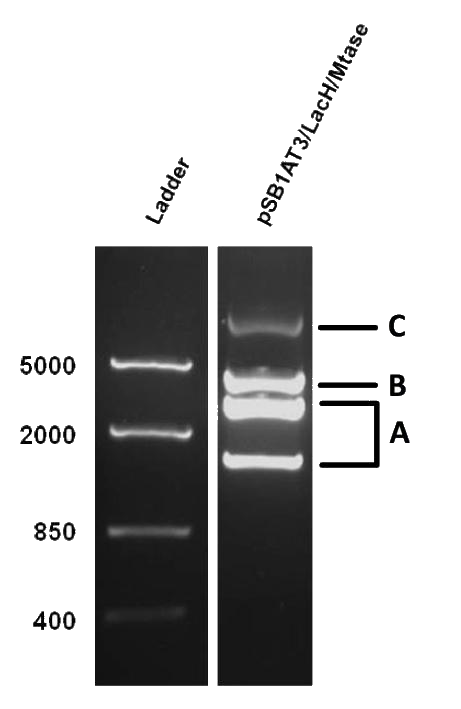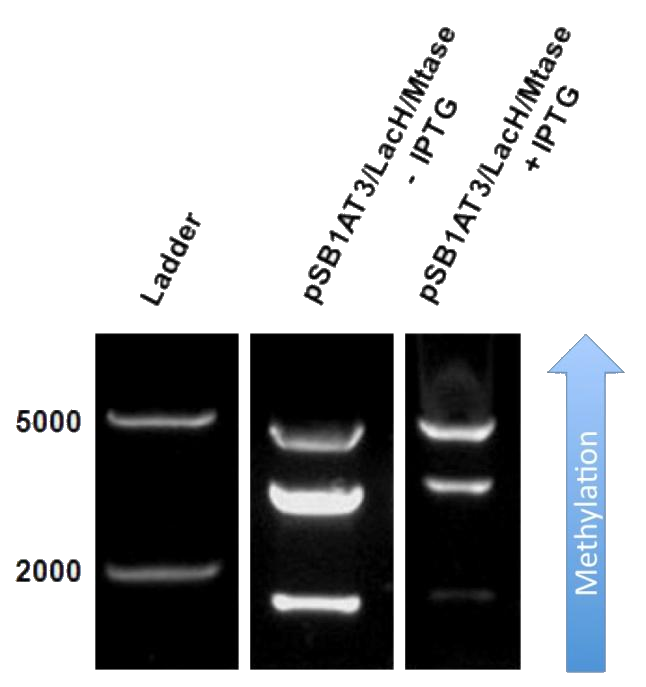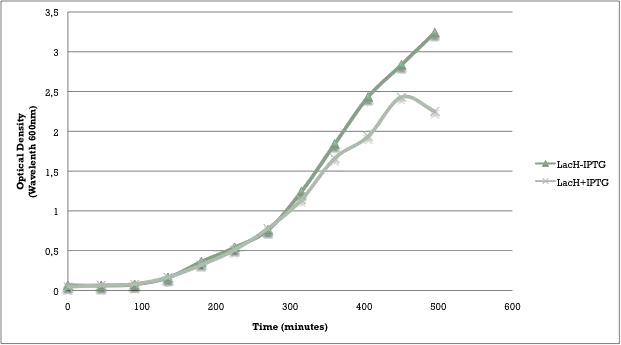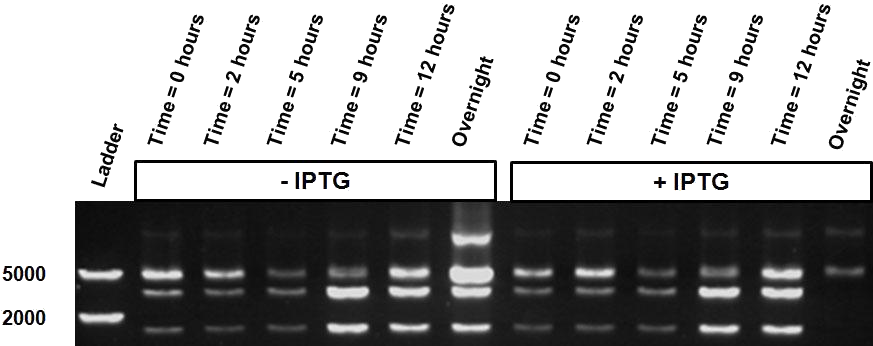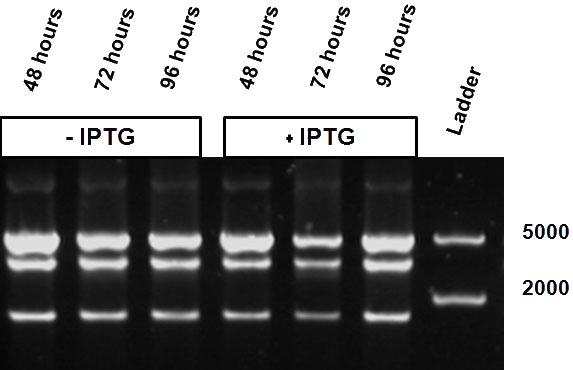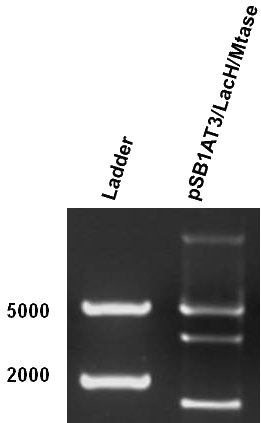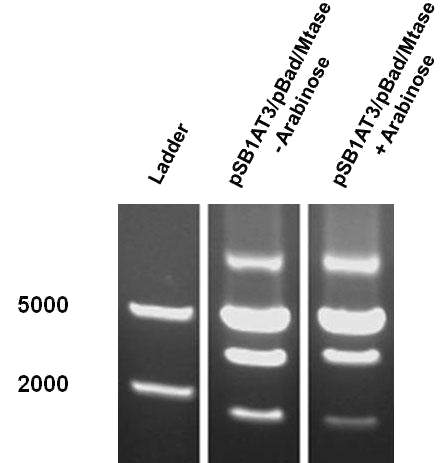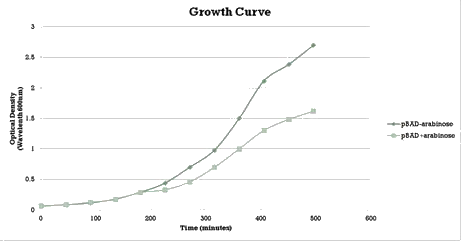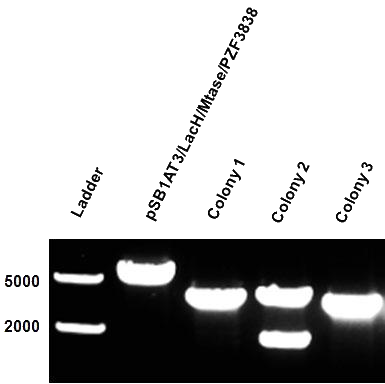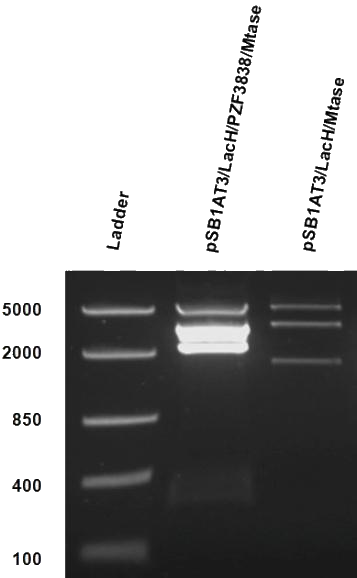Team:Amsterdam/data/experimental
From 2012.igem.org
(Difference between revisions)
| Line 73: | Line 73: | ||
The third characterisation experiment concerns the stimulation of pSB1AT3/pBad/Mtase in Efficient® DH5α™ competent cells (Invitrogen) in stationary phase with addition of 2% arabinose daily. Samples were taken after 48, 72 and 96 hours, and digested with ScaI restriction enzyme (figure 9). These results are consistent with the previous results, showing a gradual shift towards the “on-state” with induction of the pBad promoter by addition of arabinose daily. | The third characterisation experiment concerns the stimulation of pSB1AT3/pBad/Mtase in Efficient® DH5α™ competent cells (Invitrogen) in stationary phase with addition of 2% arabinose daily. Samples were taken after 48, 72 and 96 hours, and digested with ScaI restriction enzyme (figure 9). These results are consistent with the previous results, showing a gradual shift towards the “on-state” with induction of the pBad promoter by addition of arabinose daily. | ||
| - | [[File: | + | [[File:Amsterdam_exp_fig_10.png|300px|right|thumb|Figure 10]] |
The “off” state was not achieved in the absence of arabinose. All the experiments have been conducted into the high copy number plasmid pSB1AT3. It is known that leaky expression is relative to the copy number of the plasmid.1 Hence, the inability of the Cellular Logbook to show an “off” state in the absence of arabinose could be attributed to the high copy number plasmid used in these experiments as was discussed with the LacH. | The “off” state was not achieved in the absence of arabinose. All the experiments have been conducted into the high copy number plasmid pSB1AT3. It is known that leaky expression is relative to the copy number of the plasmid.1 Hence, the inability of the Cellular Logbook to show an “off” state in the absence of arabinose could be attributed to the high copy number plasmid used in these experiments as was discussed with the LacH. | ||
Revision as of 03:29, 27 September 2012
 "
"






